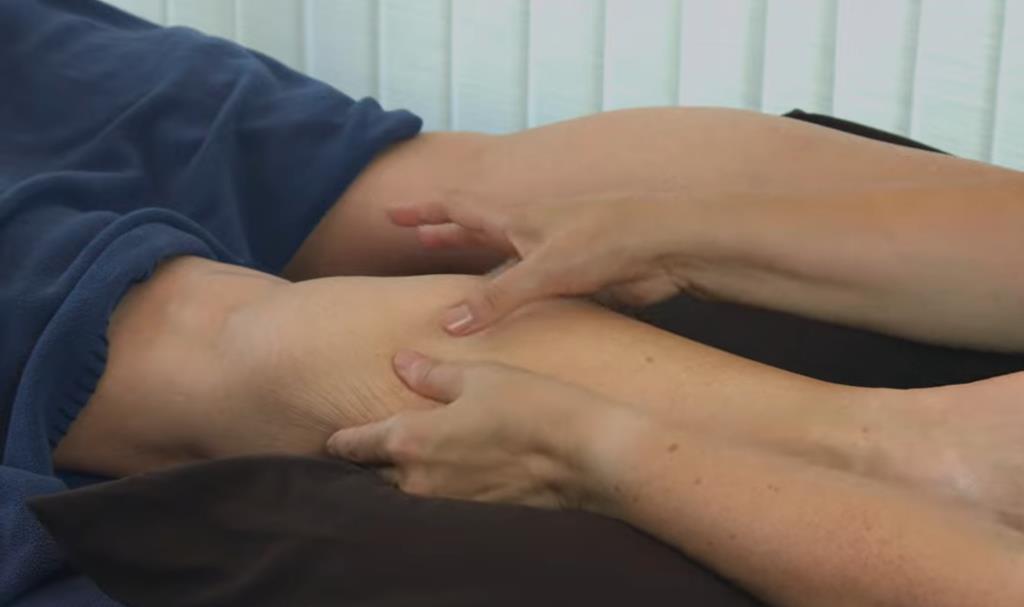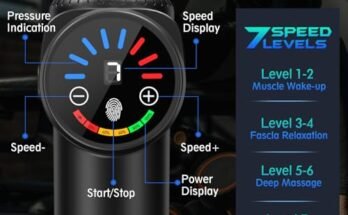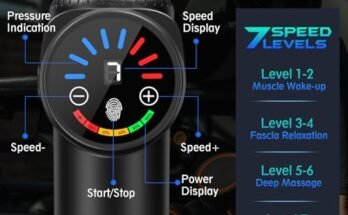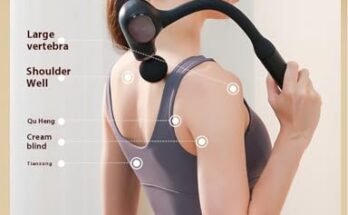There aren’t specific toxins released after a massage. Instead, massage primarily aids in the removal of metabolic byproducts like lactic acid, which are natural consequences of muscle use, not toxins. Improved circulation from massage assists the body’s natural waste removal process, leading to reduced muscle soreness, enhanced flexibility, and faster recovery.
The idea of massage releasing toxins from the body is a common misconception. Your body has a well-designed system to eliminate waste products through organs like the liver, kidneys, and lungs.
Here’s a clearer picture of what happens after a massage:
- Waste Products, Not Toxins: Massage can help eliminate byproducts of cellular activity, like lactic acid, but these aren’t toxins. Lactic acid buildup is a natural consequence of exercise and muscle use. Massage improves circulation, allowing the body’s natural waste removal systems to work more efficiently.
- Improved Waste Removal: By increasing blood flow and potentially stimulating the lymphatic system, massage can help the body remove these waste products more effectively. This can lead to reduced muscle soreness, improved flexibility, and faster recovery.
So, instead of releasing toxins, massage helps your body’s natural detoxification process by:
- Enhancing Circulation: Improved blood flow carries away waste products like lactic acid.
- Stimulating Lymph Drainage: Massage may help drain excess fluids and waste products from tissues.
- Reducing Muscle Tension: Tense muscles can restrict waste removal, and massage helps loosen them up.
Remember, staying hydrated after a massage is important to help your body process these waste products effectively.
Embrace the purification process for a rejuvenated self.
What Toxins Are Released After Massage?
Massage therapy is renowned for its ability to relieve stress and improve muscle relaxation. By manipulating soft tissues, a massage can stimulate circulation and aid the body’s natural detoxification process. This increased blood flow helps flush out toxins like lactic acid, which muscles produce during physical activity.
While beneficial, this release sometimes leads to temporary soreness, often referred to as a “massage hangover. ” It is important for clients to hydrate adequately after a massage to help their bodies expel these substances more efficiently. This practice supports the body’s recovery and enhances the overall benefits of the massage experience.

Credit: www.massagemag.com
The Link Between Massage And Detoxification
Understanding the detoxifying power of massage opens a window to better health. The human body holds onto various toxins due to stress, pollution, and diet. During a massage, the body’s natural functions get stimulated. This can lead to the release of these stored toxins.
How Massage Stimulates The Lymphatic System
A massage can jump-start the lymphatic system. This system carries waste from tissues to the bloodstream. It relies on muscle movement to work properly. A massage mimics this action. It moves lymph to lymph nodes. Here, toxins get filtered out.
- Increases lymph flow: As hands apply pressure, lymph fluid moves.
- Encourages waste removal: Faster lymph flow means quicker waste disposal.
- Boosts immune response: Clear lymph means a stronger immune system.
Massage’s Role In Releasing Toxins
Massage reaches deep into muscles. This pressure helps to loosen and release toxins. Toxins often store in muscle knots. Massage breaks down these knots. The toxins then release into the bloodstream. Afterward, the body works to eliminate them naturally.
| Massage Type | Toxin Release Action |
|---|---|
| Swedish | Gentle strokes increase blood flow. |
| Deep Tissue | Targets deeper muscle layers. |
| Trigger Point | Focuses on specific tense areas. |
Remember to drink water after a massage. It helps the body flush out the released toxins. Also, consider rest. Give your body time to process and cleanse.
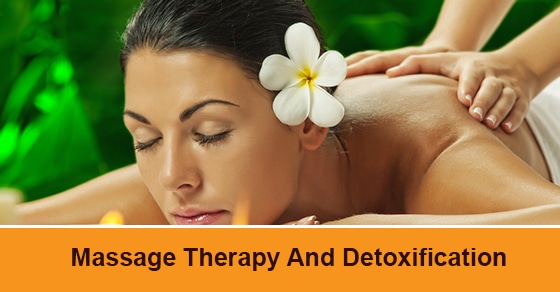
Credit: www.focusphysiotherapy.com
Types Of Toxins Discharged Post-massage
After a soothing massage, your body starts to rejuvenate. Part of this process involves eliminating unwanted substances. Understanding the toxins released can help you maximize the benefits of your massage experience. Two primary types of toxins discharged post-massage are metabolic by-products and environmental contaminants.
Metabolic By-products
A massage can accelerate the removal of metabolic by-products from muscle tissues. These often include:
- Lactic acid: Produced during exercise, it can build up and cause soreness.
- Uric acid: A waste product that can accumulate in the bloodstream.
- Adenosine triphosphate (ATP) waste: These are leftovers from energy use in muscles.
The increased circulation and lymphatic flow from massage help to flush these out of the system.
Environmental Contaminants
Our bodies encounter toxins daily from the environment. Some common environmental contaminants include:
| Toxin Type | Source |
|---|---|
| Heavy metals | Food, water, or air pollution |
| Pesticides | Non-organic food produce |
| Food additives | Processed food |
Massages can kickstart your body’s detoxifying processes, aiding in the elimination of these toxins.
For best results, drink plenty of water post-massage. It helps your body clear out the released toxins quickly and efficiently.
Possible Symptoms After A Detoxifying Massage
Detoxifying massages can work wonders. They help release toxins. But sometimes, you might feel unusual after. Your body reacts. You could notice certain symptoms. These signs show your body is cleansing. Let’s explore what you might experience.
Short-term Discomfort
After your massage, some discomfort may show up. This is common. It’s like your muscles saying hello and reacting to the release of built-up toxins. You might feel a bit of tenderness. Tightness or slight pain in muscles is normal. It’s a part of your body responding and starting to heal.
- Headaches
- Nausea
- Fatigue
- Mood Swings
These feelings are temporary. Drink plenty of water. Rest well. Your body will thank you later when it’s free from these toxins. Always tell your massage therapist and doctor if symptoms persist or get worse.
Delayed Onset Muscle Soreness (doms)
Sometimes, toxins release can cause DOMS. It’s not instant. It might start 12 to 24 hours post-massage. Muscles worked during the massage could become sore. The pain peaks, then eases over days.
| Symptom | Duration | Relief Tips |
|---|---|---|
| Muscle Soreness | 2-3 days | Hydration, gentle stretching |
| Stiffness | Up to 48 hours | Warm baths, rest |
To help, stay active. Move around. Try light exercises. Stretch. This helps your muscles recover faster and reduces the intensity of DOMS. Remember, these symptoms suggest that your body is healing. It’s releasing unwelcome elements and finding its way back to a balanced state.
Enhancing Toxin Release: Types Of Massage
Did you know that massages can help your body get rid of toxins? Different types of massages work to release toxins from muscles. Toxins can build up due to stress, exercise, or poor diets. Getting a massage encourages your body to process these unwanted substances. Let’s explore two popular massages that help in this detox process.
Deep Tissue Massage
Deep tissue massage is like a workout for your muscles. This type of massage targets deep layers of muscle and connective tissue.
- Helps relieve muscle tension and stiffness
- Uses slow strokes and deep pressure
- Boosts circulation, sending more oxygen to your body
After a deep tissue massage, drink plenty of water. Hydration helps your body clean out toxins.
Swedish Massage Techniques
Swedish massage is more gentle than deep tissue. It’s great for relaxation and improving blood flow.
- Uses long strokes, kneading, and deep circular movements
- Helps calm your nervous system
- Encourages your body to release metabolic waste through the lymph system
Like deep tissue, drink water post-massage. This helps flush away toxins.
Post-massage Practices To Support Detox
After a soothing massage, your body starts to purge toxins. To aid in this detoxification process, follow some post-massage practices.
Hydration Importance
Drinking water is critical after a massage. Let’s explore why:
- Flushes out toxins released from muscles.
- Helps maintain muscle elasticity.
- Enhances kidney function for toxin elimination.
Recommendation: Aim for 8-10 glasses of water post-massage.
Diet Considerations
What you eat matters after a massage. Choose foods that support detox:
- Fruits and vegetables: They are high in antioxidants.
- Lean proteins: Assist in muscle recovery.
- Whole grains: Provide sustained energy.
Avoid alcohol and caffeine as they can dehydrate your body.
Understanding The Debatable Aspect Of Massage Detox
Understanding the Debatable Aspect of Massage Detox often stirs discussion among health enthusiasts. Claims abound that massages release toxins from the body. But what does science say about these claims? Exploring deep into the myths and truths can shed light on this elusive topic.
Scientific Views On Toxin Release
The body naturally expels waste through organs like the kidneys and liver. When it comes to massages and toxin release, scientific evidence is sparse. While massage encourages relaxation and may aid circulation, no substantial proof exists linking it directly to the elimination of toxins.
Toxins referred to are often undefined, making scientific scrutiny difficult. Studies that do exist suggest that the benefits of massage are more about muscle tension relief and stress reduction rather than detoxification.
Professionals in the medical field typically regard the toxin release claim with skepticism. They point to the body’s natural processes as the primary means of detoxification. Without clear evidence, it is hard to endorse massages as a way to release toxins.
The Placebo Effect And Perception
Despite the lack of scientific proof, many individuals report feeling better after a massage. This feeling may be partly due to the placebo effect. Belief in the treatment plays a role in the perceived benefits. If a person believes that they are releasing toxins, they might feel more refreshed and healthier.
This psychological aspect can’t be ignored as it influences overall well-being. The positive feelings post-massage could be a combination of physical manipulation and mental relief. Thus, although the claims of detoxification through massage are debated, the notion of feeling better is almost universally accepted.
Professional Insights On Massage And Detox
Welcome to the enlightening journey into the world of massage and its detoxifying effects. This exploration offers professional insights backed by massage therapists and health practitioners.
Massage Therapists’ Recommendations
Massage therapists shed light on the detox process post-treatment. Massages help release toxins from the muscles into the bloodstream. Adequate hydration post-massage is crucial. It aids in flushing out released toxins.
- Drink plenty of water to help the body eliminate toxins.
- Rest adequately to enable the body to recover smoothly.
- Follow a balanced diet that supports detoxification.
- Consider saunas or steam baths to encourage further sweating.
Health Practitioners’ Advice On Detox
Health experts support these practices and suggest additional steps for an effective detox. Here’s their advice:
- Maintain a consistent massage routine to aid in regular detoxification.
- Incorporate antioxidants in your diet to combat the effects of released toxins.
- Engage in light exercise such as walking to boost circulation and help the body detox.
| Advice | Benefits |
|---|---|
| Hydration | Facilitates toxin elimination |
| Diet | Supports bodily functions for detox |
| Exercise | Increases blood flow for toxin removal |

Credit: drosland.com
What toxins are in muscle knots?
Muscle knots themselves don’t actually contain toxins. The idea of toxins being trapped in muscle knots is a common misconception.
What can accumulate in muscle knots are waste products like lactic acid, a byproduct of intense exercise. When muscles are overworked, lactic acid can build up and cause soreness and tightness. Restricted blood flow, caused by the tight muscle fibers, can also contribute to the discomfort.
Deep tissue massage can help to improve circulation and break down these waste products, which can ease pain and tension in the muscle knot.
What are the symptoms of toxins in your body?
The idea of toxins building up in your body and causing a variety of vague symptoms is a popular one, but it’s important to understand that there’s no scientific evidence to support a general “toxic overload.” Your body has a well-designed system for eliminating toxins through the liver, kidneys, intestines, lungs, and skin.
However, there are certain conditions that can affect how your body eliminates wastes, and some symptoms may indicate that something’s not quite right. Here are some of the possible signs that your body is having trouble eliminating toxins:
- Fatigue: This is a common symptom of many underlying conditions, but it can also be caused by a buildup of toxins. When your body is working overtime to eliminate toxins, it can leave you feeling tired and sluggish.
- Headaches: Toxins can irritate the meninges, the tissues that surround your brain, which can lead to headaches.
- Skin problems: Skin problems like acne, eczema, and psoriasis may flare up when your body is overloaded with toxins.
- Digestive issues: Constipation, diarrhea, and bloating can all be signs that your digestive system is struggling to eliminate toxins.
- Weight gain: Some experts believe that toxin buildup can disrupt hormones and metabolism, leading to weight gain. However, more research is needed to confirm this.
- Brain fog: Difficulty concentrating, forgetfulness, and mental fogginess can be signs of toxin buildup.
If you’re experiencing several of these symptoms, it’s important to see a doctor to rule out any underlying medical conditions. However, it’s important to note that these symptoms can also be caused by many other things, so don’t jump to the conclusion that you have toxin buildup.
What body parts should not be massaged?
There are two main categories of areas to generally avoid during a massage:
- Bones and Spine: Direct massage on the bones themselves isn’t beneficial and can be uncomfortable. The spine is especially delicate, and applying pressure directly to the vertebrae can be risky. A good massage therapist will focus on the muscles surrounding the spine.
- Areas with Injuries or Inflammation: Massaging an inflamed or injured area can worsen the condition. If you have any injuries, recent surgery sites, burns, rashes, or even just a sunburn, let your massage therapist know beforehand.
Here are some specific body parts to be cautious with:
- Head: Avoid direct massage on the head, especially if there’s any swelling or injury. A gentle scalp massage can be okay, but avoid putting pressure on the eyes.
- Neck (especially the front): The front of the neck is home to important blood vessels and nerves. Stick to gentle strokes on the sides and back of the neck.
- Abdomen: Especially for pregnant women or people with abdominal conditions, avoid direct massage on the stomach.
- Groin: The groin is a sensitive area with major blood vessels. Avoid deep pressure here.
- Armpits: Armpits are full of lymph nodes and can be ticklish for many people. Best to avoid them entirely.
- Varicose Veins: Massaging varicose veins can irritate them and worsen the condition.
If you’re unsure about any area, it’s always best to communicate with your massage therapist.
What happens inside your body after a massage?
A good massage triggers a cascade of beneficial effects throughout your body. Here’s a breakdown of some key happenings inside:
Relaxation and Stress Reduction:
- Parasympathetic nervous system activation: Massage triggers the “rest and digest” response. This lowers your heart rate, blood pressure, and breathing rate, promoting a deep sense of relaxation.
- Endorphin release: Similar to exercise, massage stimulates the release of endorphins, your body’s natural painkillers and mood elevators. This feeling of euphoria contributes to stress reduction and overall well-being.
Improved Circulation and Reduced Pain:
- Increased blood flow: The pressure and strokes of massage improve blood circulation throughout the body. This delivers fresh oxygen and nutrients to tissues, aiding in muscle recovery and reducing pain.
- Waste product removal: Improved circulation also helps remove waste products like lactic acid that can build up in muscles, further reducing soreness and tightness.
- Reduced inflammation: Massage can decrease inflammatory markers in the body, contributing to pain relief and faster healing of soft tissue injuries.
Enhanced Range of Motion and Flexibility:
- Muscle tension relief: Massage helps loosen tight muscles and break down adhesions, which are bands of tough tissue that can restrict movement. This improves your range of motion and flexibility.
- Improved lubrication: Massage can stimulate the production of synovial fluid, which lubricates joints and allows for smoother movement.
Other Potential Benefits:
- Improved sleep: The relaxation response triggered by massage can promote better sleep quality.
- Boosted immunity: Some studies suggest massage may enhance immune function by increasing white blood cell count.
- Reduced headaches: Massage therapy can be helpful in managing tension headaches.
It’s important to note that these are general effects, and the specific benefits you experience may vary depending on the type of massage, your individual needs, and how your body responds.
What Is Metabolic Waste After Massage?
The term “metabolic waste” after a massage refers to byproducts produced by your body’s normal cellular functions. These waste products aren’t toxins, but rather substances your body needs to eliminate for optimal function. Massage can help accelerate this elimination process in a few ways:
-
Improved Circulation: Massage techniques promote increased blood flow to the massaged areas. This fresh blood supply carries away waste products like lactic acid, which can build up in muscles after exercise or physical exertion. Lactic acid buildup contributes to muscle soreness and fatigue. By improving circulation, massage helps remove lactic acid more efficiently, leading to faster recovery and reduced muscle discomfort.
-
Lymphatic System Stimulation: The lymphatic system plays a crucial role in waste removal. Massage can stimulate the flow of lymph fluid, which helps drain excess fluids and metabolic waste products from muscle tissues. This lymph fluid then travels to the bloodstream where the waste products can be processed and eliminated by the body’s natural detoxification pathways.
-
Reduced Muscle Tension: Tense muscles can restrict blood flow and lymph drainage, hindering the removal of metabolic waste. Massage helps to loosen tight muscles and improve circulation, allowing for better waste elimination.
Overall, massage doesn’t necessarily create metabolic waste, but rather helps your body remove it more efficiently. This can contribute to various benefits like reduced muscle soreness, improved flexibility, and faster recovery.
Here are some additional points to consider:
- Drinking plenty of water: After a massage, especially a deep tissue massage, it’s important to drink plenty of water. This helps your body flush out the metabolic waste products that have been released into the bloodstream.
- Not all massage techniques target waste removal: While many massage techniques can help with waste elimination, some focus on relaxation or stress reduction. The specific benefits you experience will depend on the type of massage you receive.
Does Drinking Water After A Massage Flush Toxins?
The idea of massage flushing out toxins through water consumption is a common misconception. Here’s a breakdown of why:
- No Toxin Buildup: Our bodies are constantly working to eliminate waste products through the liver, kidneys, intestines, lungs, and skin. There’s no scientific evidence to support the idea of toxins building up and needing a massage to be released.
- Waste Products, Not Toxins: Massage may help eliminate byproducts of cellular activity, like lactic acid, but these aren’t toxins. Lactic acid is a natural consequence of exercise and muscle use. Massage improves circulation, allowing the body’s natural waste removal systems to work more efficiently.
- Hydration is Key Regardless: Drinking water is crucial for overall health, and it’s especially important after a massage. Massage can be dehydrating, and staying hydrated helps your body function optimally, including waste removal. While water won’t necessarily “flush” anything specific from a massage, it will help your body process waste products effectively.
So, while drinking water after a massage is a good practice for hydration, it’s not specifically flushing out toxins released by the massage.
What Happens If You Don’t Drink Water After A Massage?
Here’s what might happen if you skimp on water after a massage:
-
Dehydration: This is the most likely consequence. Massage can be dehydrating due to increased blood flow and potentially some sweating. Without enough water, you might experience thirst, dry mouth, fatigue, and headaches.
-
Reduced Waste Elimination: Massage helps move waste products like lactic acid out of tissues. Proper hydration is essential for this process. Without sufficient water, your body might struggle to flush out these waste products efficiently, potentially leading to lingering muscle soreness or sluggishness.
-
Lessened Benefits: While you might still experience some relaxation from the massage itself, the lack of water could hinder some of the potential benefits. For example, proper hydration can aid in muscle recovery, so you might feel more sore or stiff if you’re dehydrated.
-
No Major Risks, But Not Ideal: Skipping water after a massage probably won’t cause any serious harm. However, it’s definitely not the most optimal way to support your body’s recovery and maximize the benefits of the massage.
In conclusion, while not necessarily risky, staying hydrated after a massage is recommended to help your body function at its best and experience the full potential benefits of the massage treatment.
